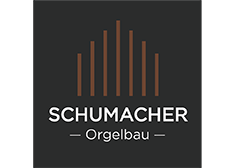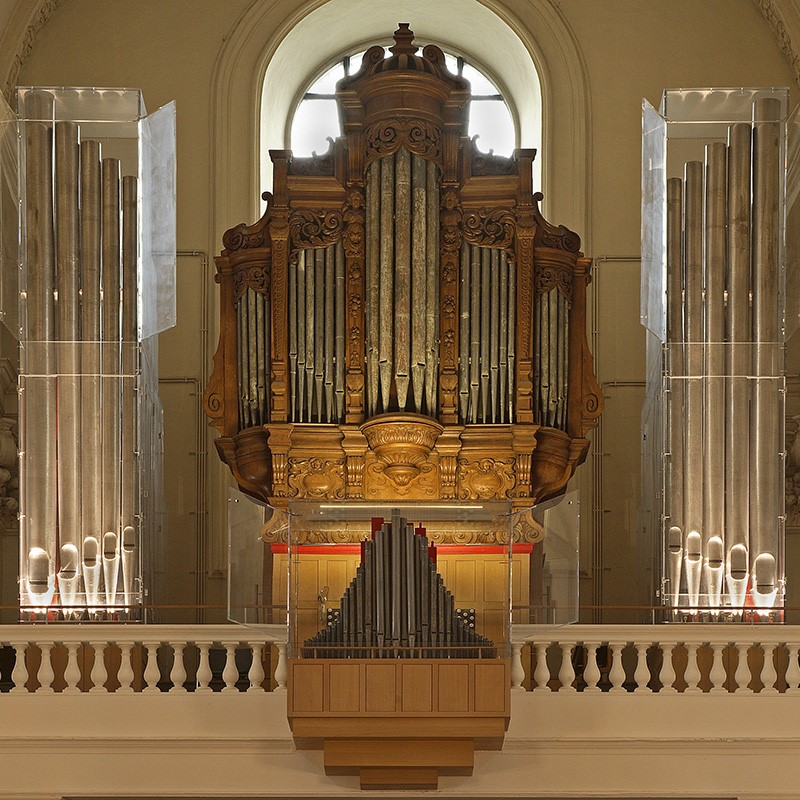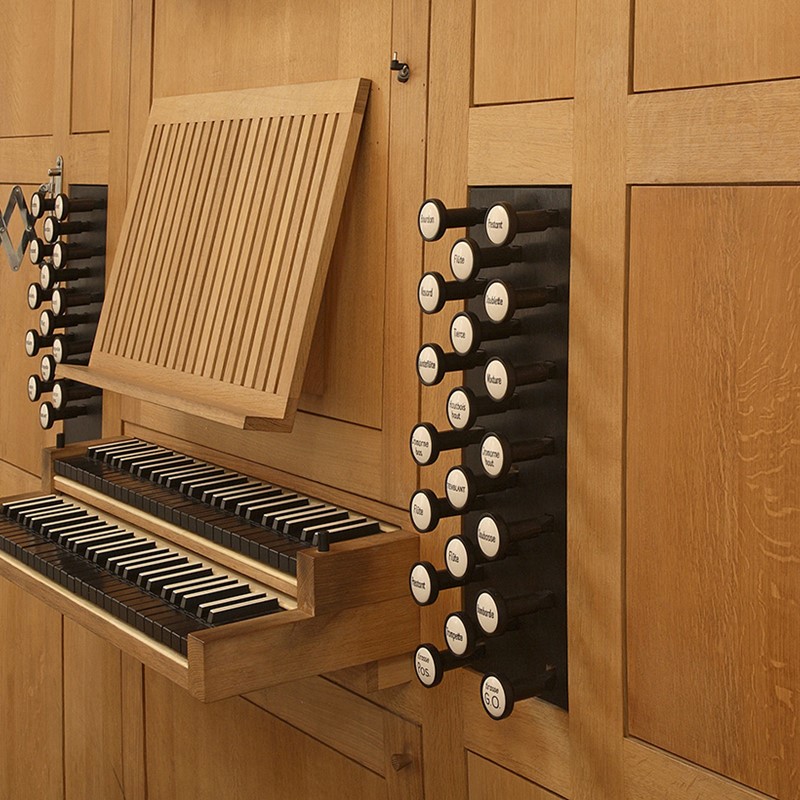Brussels (B) | Saints John and Stephen at the Minimes
The preliminary text that would later serve as main guideline for writing the final scope of work document was written by Professor Hubert Schoonbroodt (+) in the late 1980’s. It was grounded on an analysis made on the organ prior to its disassembly and contemplated the restoration of the Noelmans organ from 1681 with original lay-out, contained in its 5-part original main case and with a reconstructed Positif de Dos right in front of it. The project advocated also for the preservation of ulterior enlargements such as the romantic Récit and the independent Pedal, both divisions to be reinstalled in ancillary cases separated from the original buffet: the Pedal in two independent flanking towers and the Récit enclosed behind the main case. The whole was intended to form a large 3-manual organ with independent Pedal, preserving and incorporating older material as far as practicable. The Pedal cases and the Positif de Dos should display decisively contemporary designs following an explicit request made by the National Commission for Landmarks and Historical Sites.
As the disassembly progressed further detailed analysis permitted us to date each rank of pipes with greater accuracy. It soon became evident that the organ had undergone several and radical transformations along history which had entailed, among others, severe lay-out rearrangements and major technical alterations. The incompatibilities of scaling and pitch between the baroque and the romantic pipe work became obvious. Then a problem concerning space availability sprouted: the Pedal division as it was conceived - with an additional Open 16’ – would not fit in the towers. The whole restoration concept shook for a moment and made us consider counterproposals, yet all grounded on the strict preservation of historical material.
At this level of discussion there were various possible scenarios:
- Building a 3-manual organ as originally intended, lodged in separated cases and adapting the romantic-symphonic pipe work to the baroque ranks for the sake of compatibility.
- Building a 3-manual organ with a keener symphonic accent, adapting the baroque pipe work to the symphonic concept. This would mean to relinquish not only the scission between the organ cases but also the preservation of the existent visual arrangement.
- Splitting elements of different periods and building two independent instruments of entirely different concepts: a two-manual baroque organ with independent Pedal, and a smaller 1-manual romantic instrument.
This last option found greater favour among the consultancy team because it entailed fewer alterations to the original blueprints and to the organ cases in contemporary style. The baroque organ specification remained unaltered, thus with a large independent Pedal division, whereas the romantic organ was slightly expanded with ranks placed on prepared-for toe-boards existent in the chest. It gained also an independent Pedal with a single Soubasse 16’.
Stop list
Positif de dos I
C – f '''
Bourdon 8'
Prestant 4'
Flûte 4'
Nasard 2 ⅔'
Doublette 2'
Tierce 1 ⅗'
Quinteflûte 1 ⅓'
Mixture III
Cromorne 8' B/D
Trompette 8' dessus
Tremblant
Grand-Orgue II
C – f '''
Bourdon 16'
Montre 8'
Bourdon 8'
Prestant 4'
Flûte 4'
Nasard 2 ⅔'
Doublette 2'
Sifflet 1'
Fourniture V
Cornet V
Trompette 8' B/D
Clairon 4' B/D
Tremblant
Accouplement des claviers
Pédale
C – f '
Flûte 16'
Soubasse 16'
Flûte 8'
Prestant 4'
Bombarde 16'
Trompette 8'
Tirasse G-O / Péd.
Tirasse Pos. / Péd.


